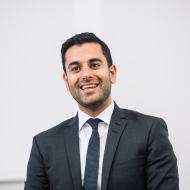About TMT Law
Lexis®+ TMT is an online practical guidance product for contentious and non-contentious lawyers dealing with technology, media and telecommunications matters.
New technologies
Guidance for key emerging technologies, such as AI, NFTs, the Metaverse and autonomous vehicles, explaining both how the technologies work and the key legal regimes (existing and new) that apply to their operation.
Information technology
Core content for all TMT lawyers, this topic contains key 'go-to' precedents and practice notes at the route of most TMT related issues. Some of most popular areas are the software and cloud computing topics.
Outsourcing
Our content covers simple outsourcing transactions as well as those with a more complex structure, and the impact of hyperscalers and recognised market practice relating to the negotiation and drafting of affected terms.
Expertise
Whether you're advising on adtech, cookies or NFTs, Lexis+® TMT has the know-how and tools to help you succeed.
Latest TMT News
TMT analysis: On 3 September 2025, the General Court of the European Union delivered the first major judicial interpretation of Regulation (EU)...
The Department for Science, Innovation and Technology (DSIT) has announced a new partnership with Google DeepMind to advance the development of AI...
Welcome to this week’s edition of the TMT weekly highlights: a hand-picked summary of news analysis, updates and new content from across the...
Ofcom has launched a consultation on proposals to make the Wireless Telegraphy (Exemption) (Amendment) Regulations 2025, which would amend the...
The European Commission has opened a formal antitrust investigation into whether Google has breached EU competition rules by using web publishers’...
Latest TMT Practice Notes
Business to consumer e-commerce—legal issuesThis Practice Note sets out some of the key legal issues to consider when trading with consumers online....
Joint, several, and joint and several liabilityContractWhere a contract is made by two or more parties it may contain a promise or obligation made by...
Cross-border service—jurisdictional gateways (claims involving digital assets)This Practice Note considers the cross-border service and claims...
Dealing with social media influencers—PolandThis Practice Note is aimed primarily at brands and advertising agencies wishing to engage with social...
Sector advertising law and regulationThis Practice Note examines the advertising of certain goods or services in sectors which have sector-specific...
Latest TMT Precedents
Template agreement—mutualThis Agreement is made on [date]Parties1[insert name of Party A][ of OR a company incorporated in [England and Wales] under...
Interim outsourcing agreementThis Agreement is made on [insert date] (the Commencement Date) between the following parties (each a party and together...
Minimum purchase clauseDefinitionsMinimum Purchase Commitment•means the commitment to [purchase the Minimum Quantities OR place Orders with an...
Location agreementThe parties agree:From:[insert name of producer](we or us)To:[insert name of premises owner](you)Dated:[insert date]Dear [insert...
Software trial agreement—pro-supplierThis Agreement is made on [date]Parties1[Insert name of supplier], a company incorporated in [England and Wales]...
Latest TMT Q&As
Featured TMT content
What are perpetual, irrevocable and royalty-free licences?
Reputational damage claims—alternative causes of action
Reputational damage claims—alternative causes of actionThis Practice Note considers the relationship between causes of action for reputational damage...
Defamation
DefamationThe tort of defamation is governed by a mixture of statute and common law. The relevant statutory law is contained in:•the Defamation Act...
Software escrow
Software escrowIntroductionEscrow is the process of two or more parties placing property or instruments in the hands of a trusted third party (an...
Defamation—limitation
Defamation—limitationThe ordinary time limit for defamation and malicious falsehood claimsA claimant must commence a claim for defamation within one...
Defamation and malicious falsehood—publication
Defamation and malicious falsehood—publicationThis Practice Note examines the role of publication in an action for defamation or malicious falsehood....
Defamation—defences
Defamation—defencesDefencesThere are a number of substantive defences to a defamation claim, the majority of which are now, since the Defamation Act...
Malicious falsehood
Malicious falsehoodThis Practice Note provides an introduction to the tort of malicious falsehood. Unlike a claim for defamation, there is no...
Defamation and social media
Defamation and social mediaThe internet and, in particular, social media is a high risk area for defamation litigation. Content posted on blogs,...
Websites—compliance requirements
Websites—compliance requirementsConsideration of electronic data interchange (EDI) arrangements, blockchain, smart contracts or sector-specific laws...
Deepfakes
DeepfakesThis Practice Note considers the following legal issues, technical information and applications of deepfakes:•What is a deepfake?•How...
Does the Unfair Contract Terms Act 1977 apply to business-to-business contracts and to what extent might it restrict a contract term permitting variation of terms and conditions on notice?
Notice and take-down letter—defamation
Notice and take-down letter—defamationAddress of Website OperatorDear [insert organisation name]Notice and take-down letterWe act for [insert client...
What do the words ‘defend, indemnify and hold harmless’ mean?
Using framework agreements for services
Using framework agreements for servicesFramework agreements (sometimes referred to as master services agreements) are essentially umbrella agreements...
Do you have a letter of claim (cease and desist) letter for slander damaging professional reputation?
Copyright in films and television programmes
Copyright in films and television programmesFor the purposes of copyright law the term 'film' means a recording, on any medium, from which a moving...
Television format rights
Television format rightsWhat is a television format?A television format is a concept or idea for a television programme or series of programmes...
Associated legal terms
API
A source-code based software interface or intermediary that allows applications or software components to communicate with each other and defines the way in which an application will interact with other software and share data.
Compute
Typically used to refer to the processing resources (speed, capacity) of a computer device.
Talent agreement
An agreement, also known as an influencer agreement, intended to be used by brands working with celebrity and social talent bloggers and vloggers as part of a marketing campaign. Influencers may operate on platforms such as YouTube and in a wide range of industries.






